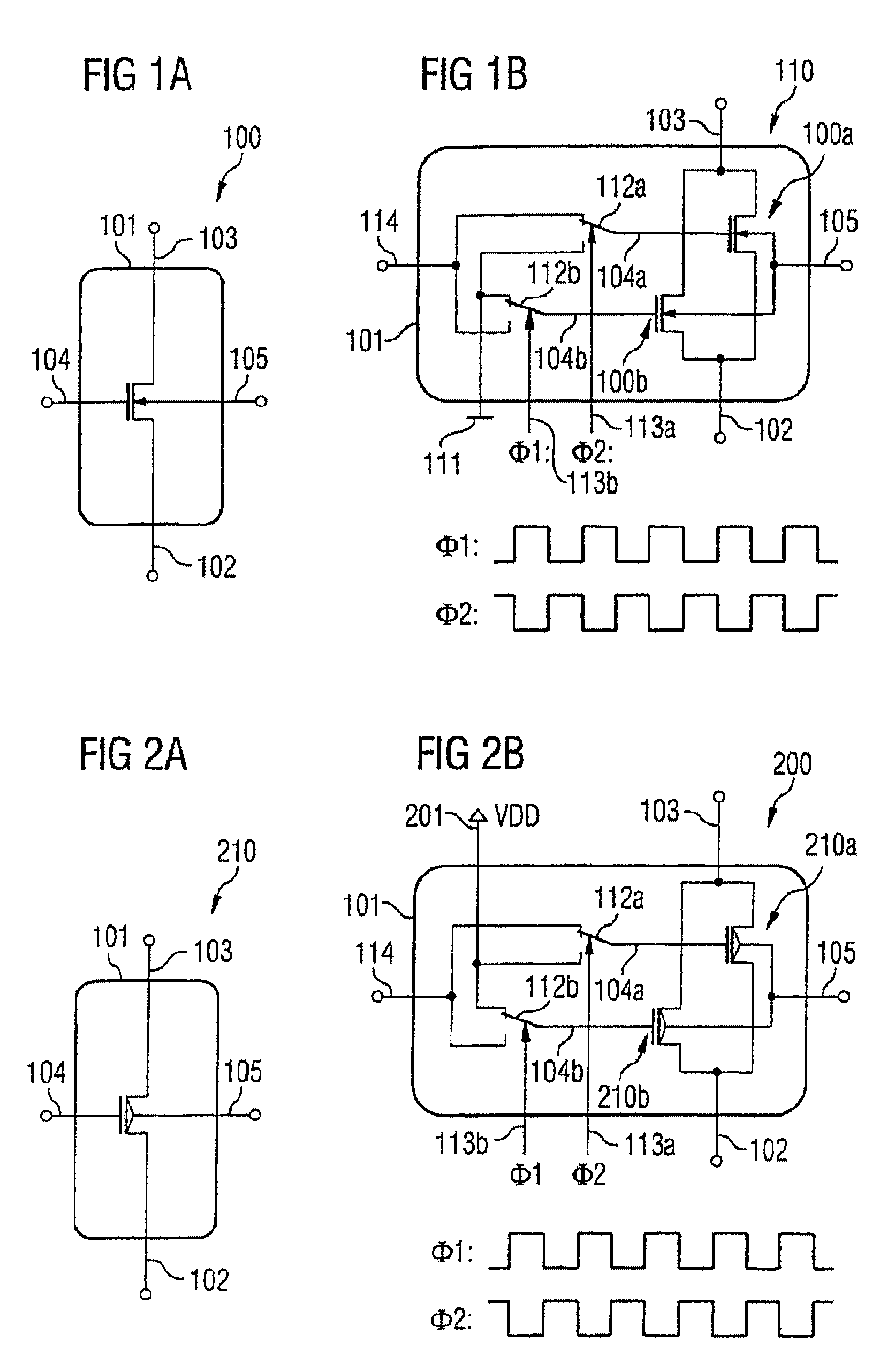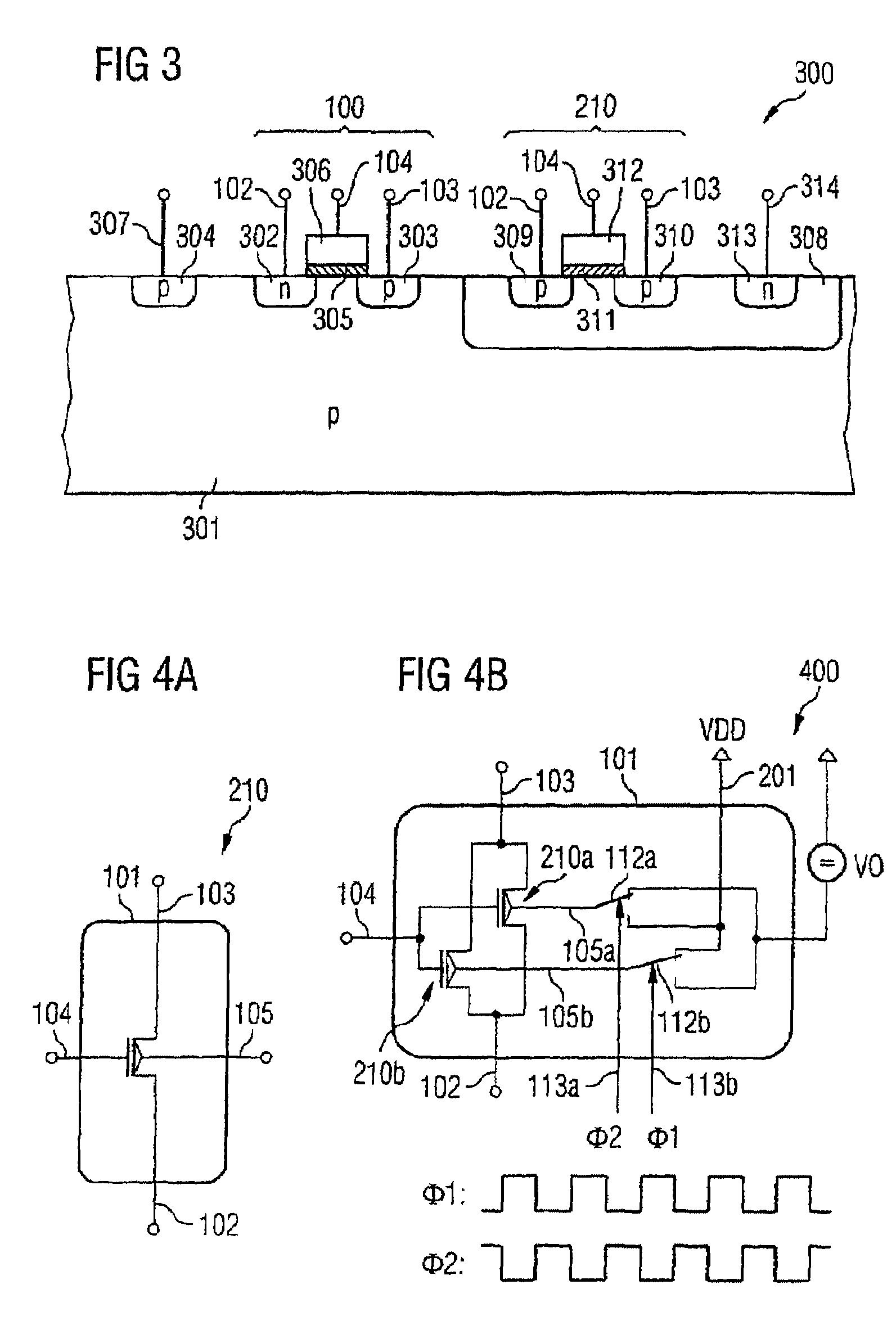Noise-reducing transistor arrangement
a transistor and noise reduction technology, applied in the field of noise reduction transistor arrangement, an integrated circuit, can solve the problems of limited performance of analog circuits, limited accuracy of electrical circuits, and low-frequency noise of mos transistors
- Summary
- Abstract
- Description
- Claims
- Application Information
AI Technical Summary
Benefits of technology
Problems solved by technology
Method used
Image
Examples
Embodiment Construction
[0049]The invention is based on the problem of effectively reducing the low-frequency noise of transistors with little outlay.
[0050]The problem is solved by means of a noise-reducing transistor arrangement, by means of an integrated circuit, and by means of a method for reducing the noise of field effect transistors.
[0051]The noise-reducing transistor arrangement according to the invention has a first and a second field effect transistor, each of which has a first source / drain terminal (source terminal) and a second source / drain terminal (drain terminal) and a control terminal for application of a first and a second signal. The first source / drain terminals of the first and second field effect transistors are coupled to one another. The second source / drain terminals of the first and second field effect transistors are coupled to one another. The transistor arrangement is set up in such a way that alternately the first signal can be applied to the control terminal of the first field e...
PUM
 Login to View More
Login to View More Abstract
Description
Claims
Application Information
 Login to View More
Login to View More - R&D
- Intellectual Property
- Life Sciences
- Materials
- Tech Scout
- Unparalleled Data Quality
- Higher Quality Content
- 60% Fewer Hallucinations
Browse by: Latest US Patents, China's latest patents, Technical Efficacy Thesaurus, Application Domain, Technology Topic, Popular Technical Reports.
© 2025 PatSnap. All rights reserved.Legal|Privacy policy|Modern Slavery Act Transparency Statement|Sitemap|About US| Contact US: help@patsnap.com



